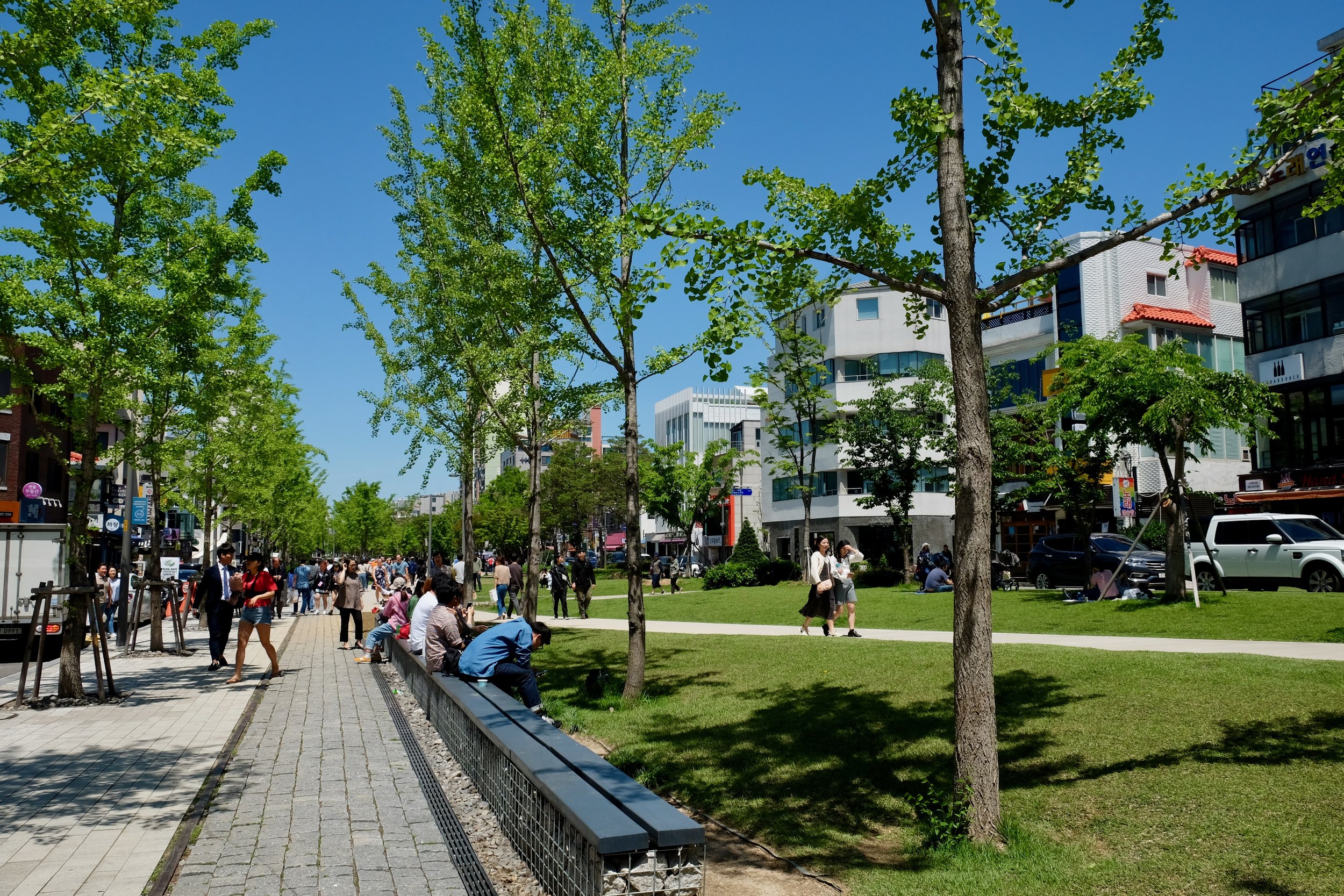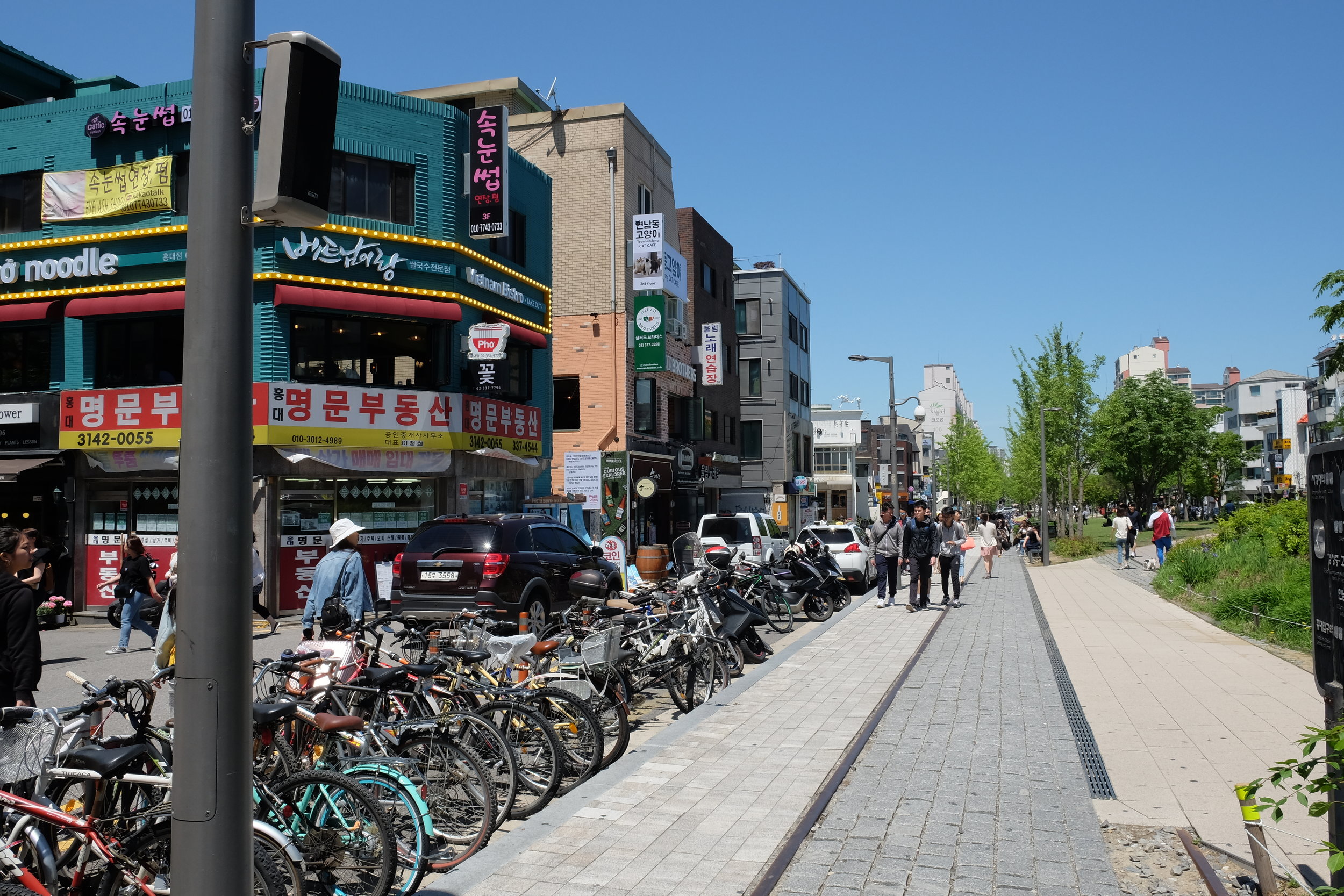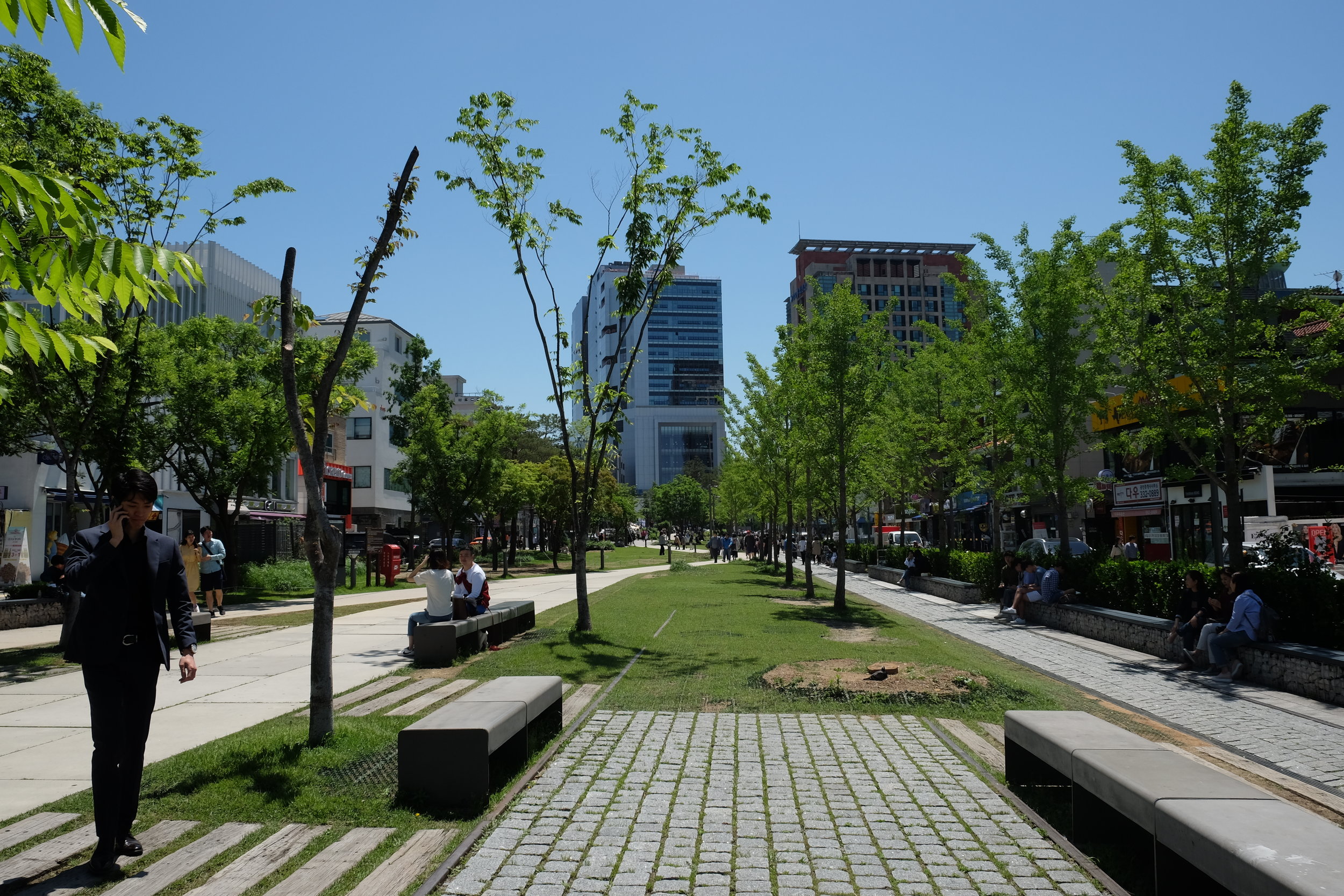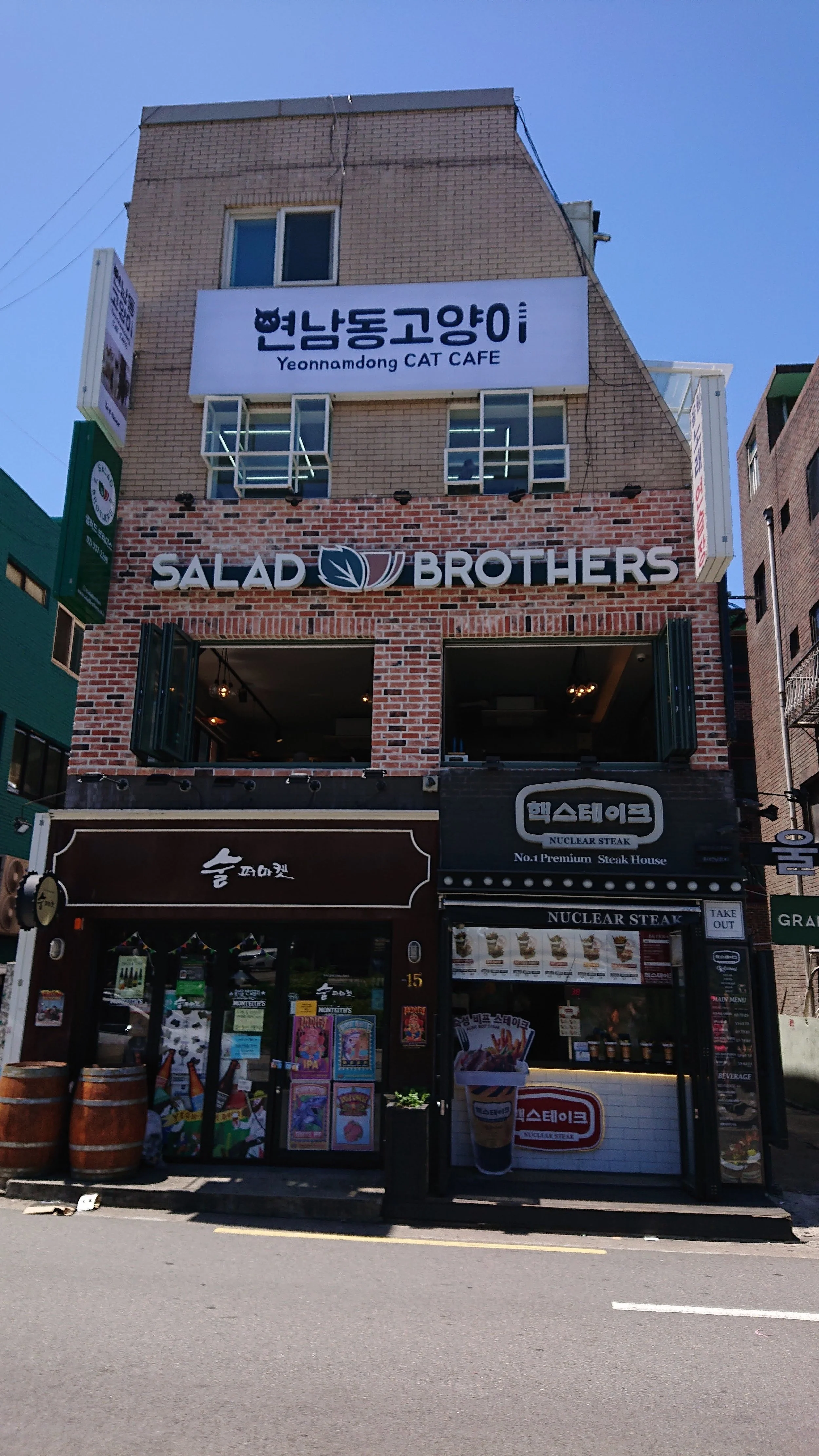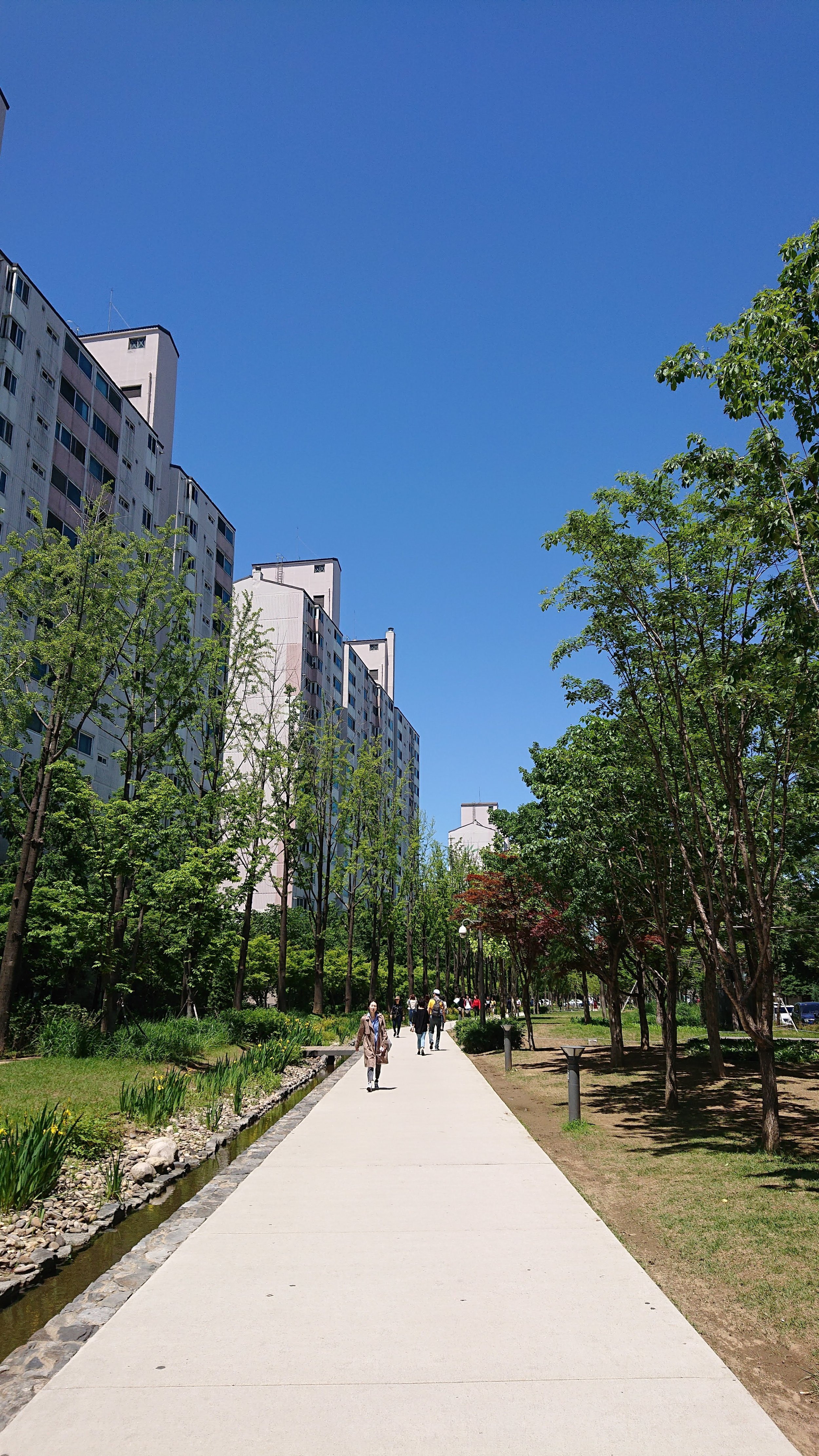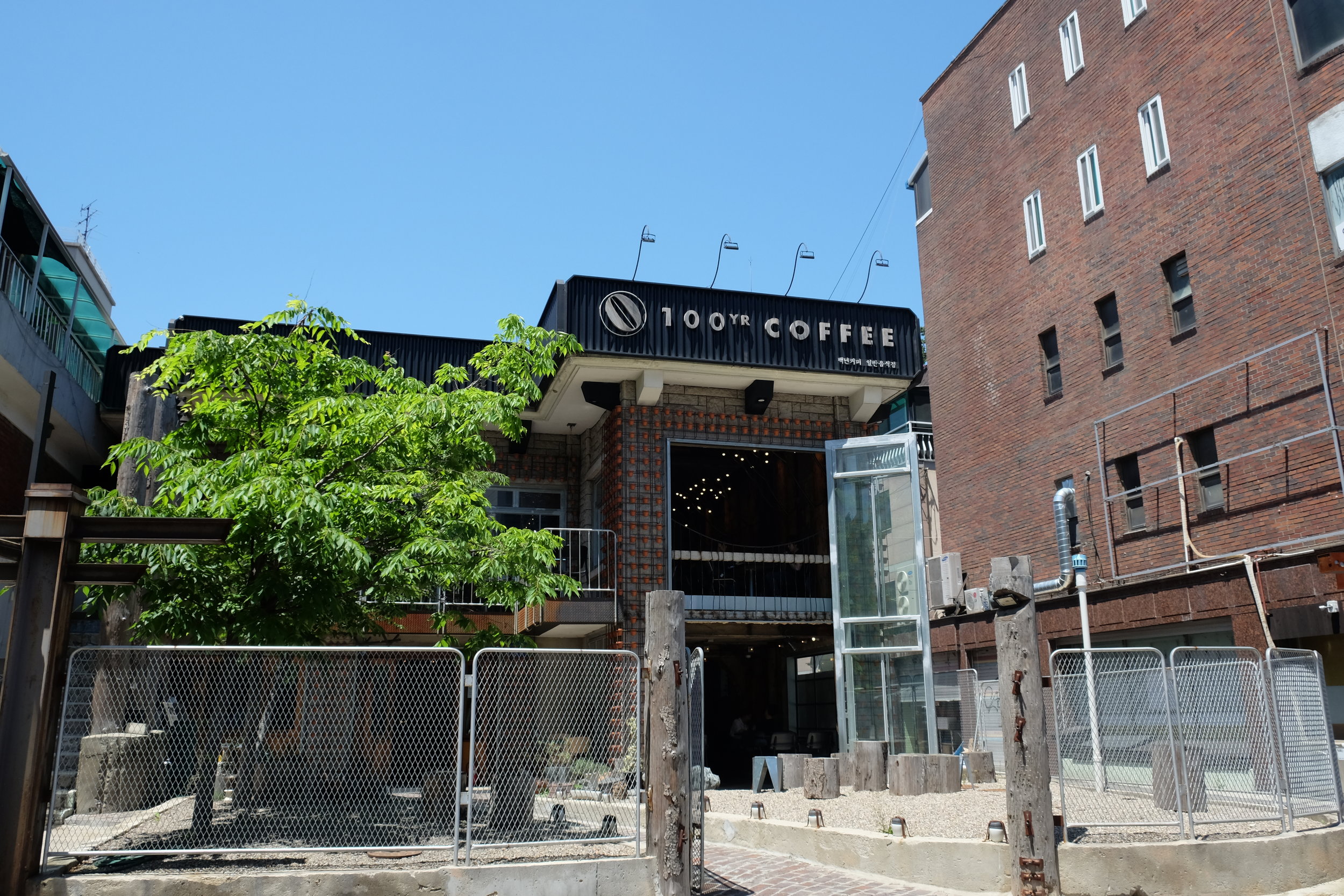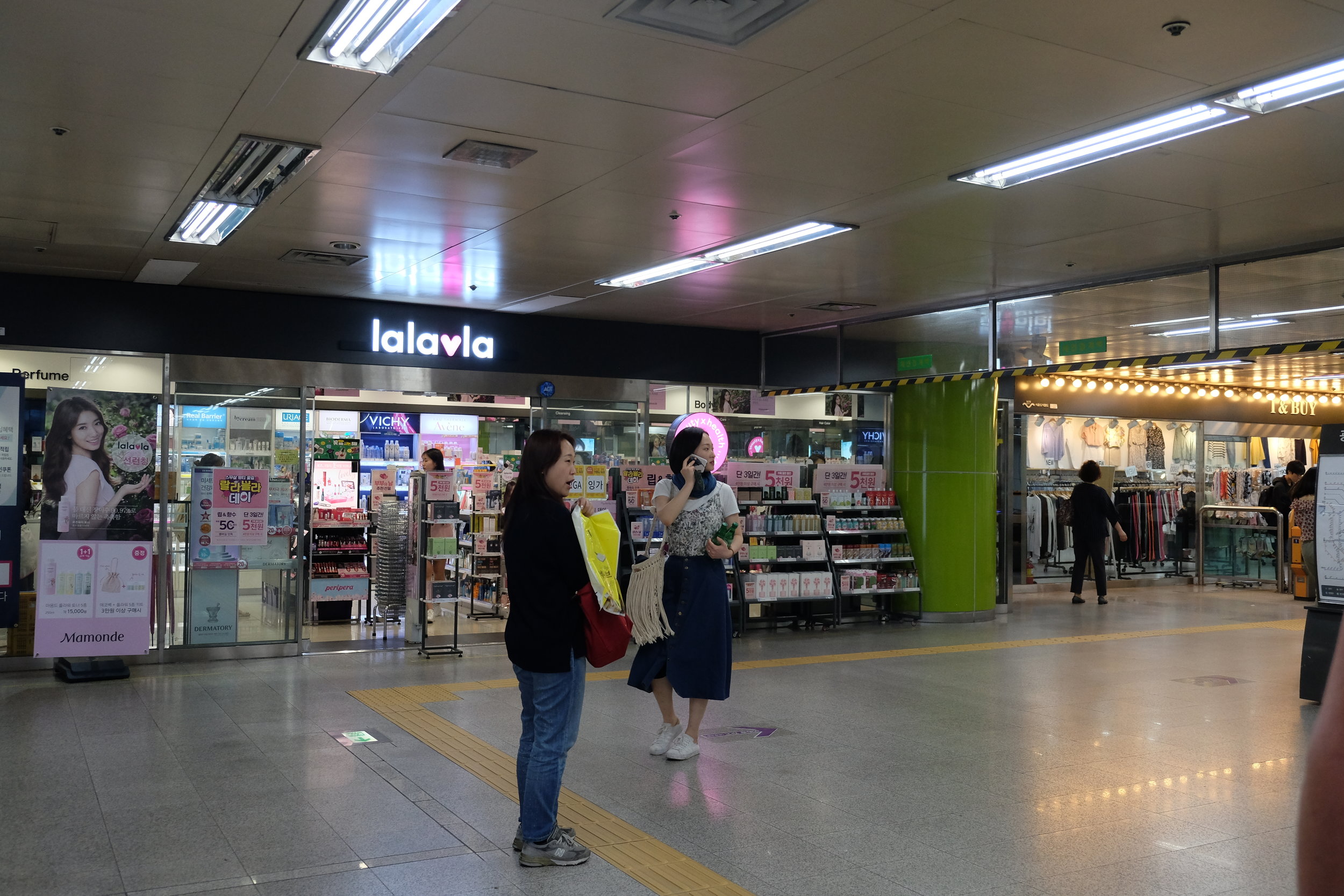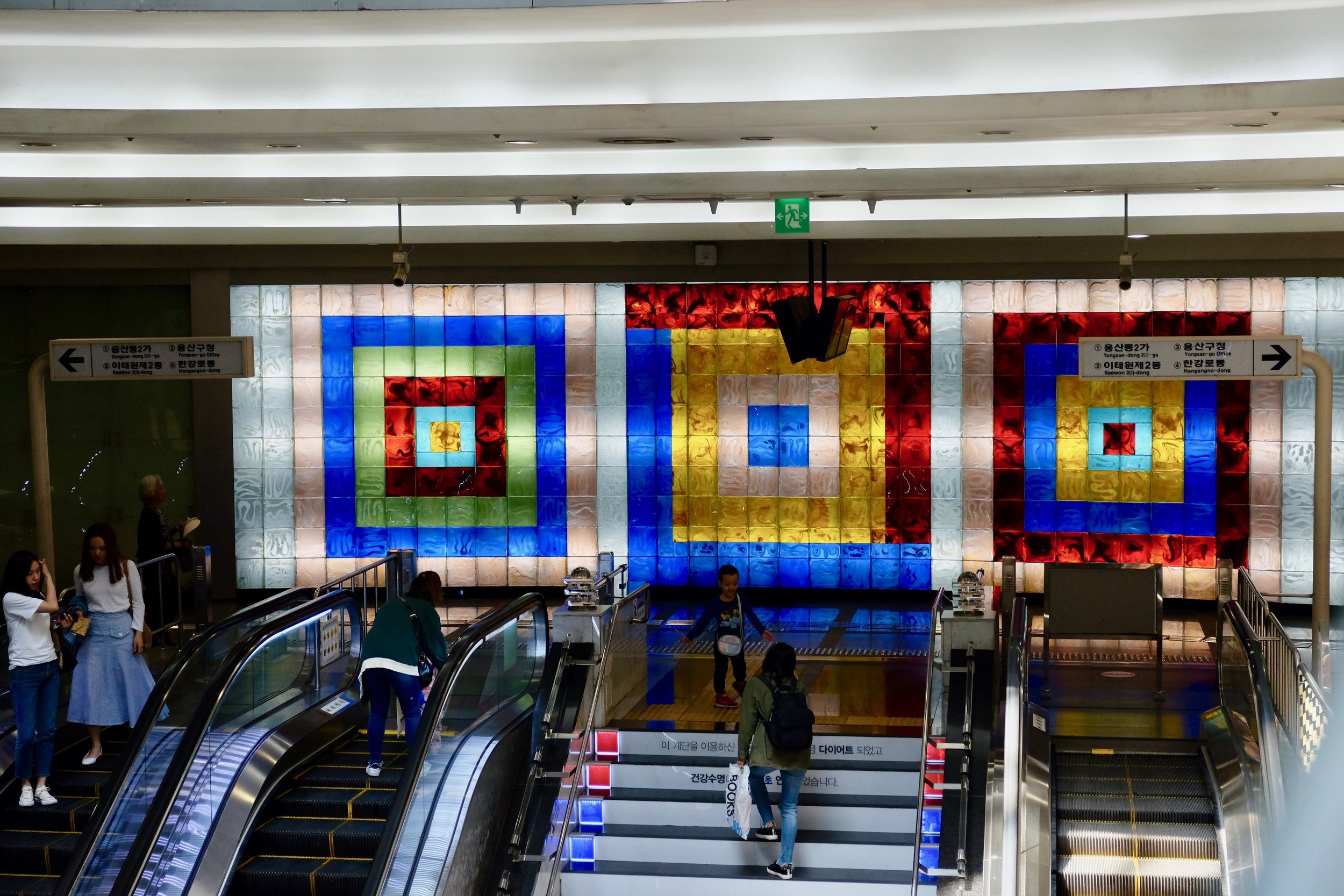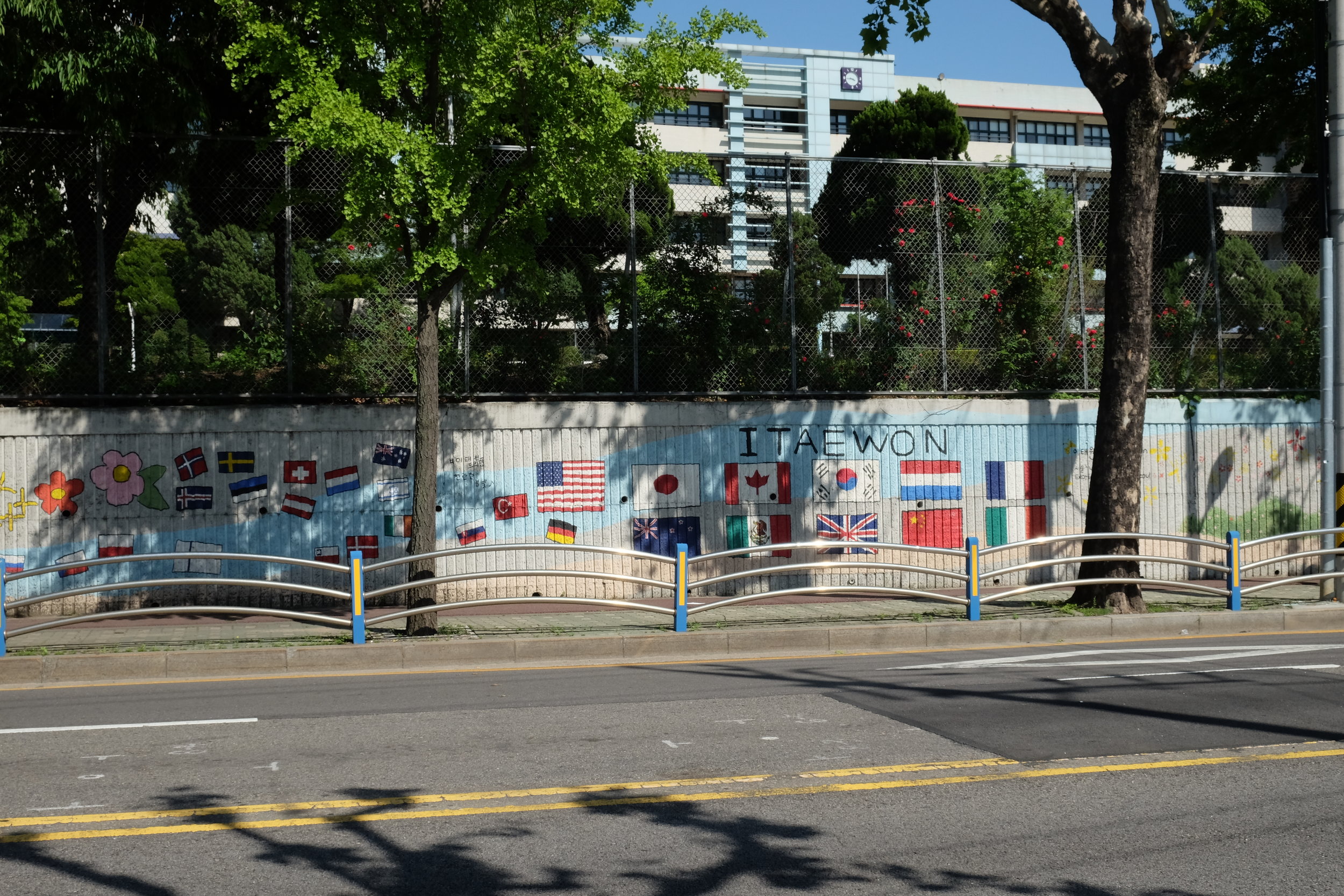Seoul is the capital city of South Korea, and the 4th largest metropolitan economy in the world. Larger than London and Paris, the wider Seoul area houses roughly half of the country’s population. Like the country as a whole, it has developed into an economic powerhouse at breakneck speed in the time since the Korean War. It was founded almost 2,000 years ago, in 18 BC, by the Baekje people, one of the Three Kingdoms of Korea after Silla and Goguryeo. Goguryeo later on became known as Goryeo, from which the modern name of Korea is derived.
South Korea in general is a place with an exciting and very complicated history, and Seoul is at the centre of it all. With over twenty-five million people packed into one area, the combination of high-rise buildings, bustling intersections, quiet back streets, and traditional palaces and parks are both intoxicating and an assault on the senses. There are 25 districts, each with their own flavour, but for our first few days, we opted to stay in Hongdae in the Mapo-gu district. The name is a portmanteau derived from Hongik University (Hongik Daehakgyo), which is one of the top fine arts schools in Korea. As you might expect from such an area, it has a calm, artsy feel by day with small shops and quirky cafés, and an action-packed nightlife once the sun goes down. The streets here are stuffed to the gills with bars, nightclubs, karaoke rooms, and cheap restaurants, and there’s something to do at any hour. It’s a fantastic place to watch young Koreans have fun and act like anyone else of that age.
As it’s teeming with university students, there’s plenty of accommodation to go around at affordable prices. We wanted to find a place that was centrally located with an option to park the bike someplace safe and out of the way. The Haemil Guesthouse ticked all of the above. For 50,000 won (~€40) per night, we got a quiet double room with an ensuite bathroom, toiletries, WiFi, TV, air conditioning, cooking sink and hob, and free breakfast. It was just what we needed.
The Haemil Guesthouse. 30, Donggyo-ro 46-gil, Mapo-gu, Mapo-Gu, 121-867 Seoul.
We had made arrangements beforehand with the proprietor (who, like 20% of all Korean men, is called Mr. Kim) to keep the tandem in the reception area during our stay. But once we got there, we realised that despite our best efforts, the entrance was just too narrow to guide our bike through (even more so than the foyer in our Derry, Northern Ireland B&B), so we ended up keeping it in the small gated backyard. Even in central Seoul, there’s little to fear as far as theft or vandalism is concerned, so this was more than safe enough. The guesthouse also has a small courtyard in front that’s great for post-arrival tinkering. All in all, we were very happy with our choice.
It also turns out that we arrived in town at just the right time. An old pal of Neil’s from his London days, Jim, is currently in the middle of a 9-month cycling tour across Asia, and it just so happens that he arrived in Korea a couple of days ago. It’s rare enough that you just serendipitously find your mate in a random city on the far side of the world, so we jumped at the chance to spend an evening together telling yarns and finding out what he’s been up to on his travels.
Jim is an utter lunatic, there’s no other word for him. He started his tour in Beijing, rode across the Gobi desert, through Mongolia, and back into the northwestern Chinese badlands, before heading for Hong Kong and making his way overland through Vietnam, Laos, Thailand, Myanmar, India and Bangladesh. After a slog like that, Korea was going to be a breeze with its dedicated bike paths and roadside amenities.
After a first beer at a tiny pub near our guesthouse called the Crow Bar, where to his delight Jim found Guinness for 9,000 won (€7), we headed to a BBQ place for some grub. €1 is about 1,250 won at the moment, and 45,000 won got us an immense plate of meat with some veggie sides - more than enough for 3 people but as Jim had eaten beforehand, we hoovered it down between the two of us happily and without shame. It was clearly Friday night, as evidenced by the intense roaring noise in the restaurant, with loads of people getting off work and starting their weekends off with a bang. The phrase “Work hard, play hard” is almost a religion here, and while we have both lived in big cities (New York and London), living in Berlin is generally more laid back, so it’s no wonder we felt a bit overwhelmed at first.
We finished the night at Craft One, a craft beer bar at the end of our street that boasts a surprisingly impressive selection of taps – although Korea is known more for soju than beer, in recent years a brewing industry has been finding its feet. Tasty as the beer undoubtedly is, it’s another sign of the creeping Westernisation that continues to seep into the country.
Exchanging notes on our future plans - us heading along the rivers to Busan, climbing-obsessed Jim going east over the hills to pick up the bike path there - we vowed to keep in touch over the next week and see if we could meet again when we both made it to the southeast corner. Then Jim just walked off suddenly, and we were immediately concerned if something was wrong. Turns out that cycling alone for so long meant that he had just forgotten about social pleasantries, hence the signature Irish goodbye. Neil was most impressed.
What are the odds that we meet up in a place like this after so long? Funny wee world.
The next day, we slept in until 11:30 AM to get over the last bits of jet lag and just roamed the city streets, exploring hidden nooks and getting lost like only we can. The idea is to return to Seoul at journey’s end and spend a few days here again before flying back home, so we weren’t in a rush to see all of the things. This is still only our second full day here, and it’s important that we conserve our energy and not get puffed out.
Like we’ve said before, Hongdae is a splendid place to hang out, with its urban art scene and indie music culture. The neighbourhood was built by a group of artistic individuals back in the 1990s, and thanks to cheap rent, musicians and street artists started moving into available ateliers in the area. Many have transformed now into cafes or live music venues, and the region has a reputation as the mecca of underground club culture. It’s wonderfully mellow during the day, and we spent a couple of relaxing hours wandering around.
This lovely leafy area is just a short walk away from Haemil Guesthouse - Yanghwa-ro-21-gil. This is the “downtown” of Hongdae, with tons of shops and cute restaurants.
“Cute” is an adjective, noun, and verb in Korea, and this cafe is the epitome of that.
Interesting juxtaposition of old and new here.
Benefits of visiting a foreign country: finding flavours of your beloved ice cream brand that you can’t find anywhere else.
Jess’s dream scenario: an entire warehouse full of Korean rice.
Lunch!
We gradually made our way east towards Itaewon, located in the Yongsan (which translates to “Dragon Hill”) District and popular with American soldiers, thanks to the major military base situated nearby. Expat businessmen and visiting foreigners followed in their wake, and until English teachers starting pouring into Korea, it was one of the only places in the country where you could buy “Western” items such as leather jackets, deodorant, tampons, or Hershey’s Kisses. Nowadays, you can pick up tailored suits and shoes for peanuts, but due to its popularity with the army masses, there are a sweep of “hostess bars” (read: strip clubs) all over the place. It’s home to roughly 250,000 people, and is widely known as one of the most ethnically diverse regions in the land (although “diverse” is a relative term in a land where over 99% of the population are native Koreans).
When packing for this trip, we had to make concessions on what to bring with us from Berlin due to weight limitations. Sunscreen was an item that we decided to buy once we landed, and seeing how paleness is a highly desired trait for Koreans (it used to be a sign of wealth when someone had light skin, as it meant they didn’t have to work in the fields), we didn’t think it would be so hard to find. Wrong. We went to grocery stores, convenience shops, and even a pharmacy before we finally found it on offer at a makeup store. As sunscreen is considered a beauty item, you cannot find any here that’s less than 50 SPF, with ridiculous prices and dubious anti-ageing superpowers ascribed to them. It did feel nice to put on though, like a delicate body lotion rather than the slime us Westerners are used to.
Five-way intersection near the Sinchon underground station.
Taste of the local cycling scene.
Snapshots of Sinchon Station and Euljiro-3-ga Station:
Itaewon is also home to the National Museum of Korea, which was our next stop. It holds over eleven thousand artefacts, including an incredible 94 official National Treasures, but only a fraction of those are on display at any given time. Among the many rooms on the ground level are exhibitions from the Three Kingdoms period, with paintings, calligraphy, wooden art, and intricate Buddhist scroll works taking up the rest of the building. A couple of hours of museum browsing was a good way to spend the rest of the afternoon, so after a spot of lunch at ToiToi, a Vietnamese restaurant with decent pho, we walked along Yongsan Park to the main entrance. Note that the fastest way to get to the museum is via the Ichon stop on Line 4 and Jungang Line. You can’t actually walk through the park (like we had hoped), as it’s completely fenced off due to the military base.
National Museum of Korea, 137 Seobinggo-ro, Seobinggo-dong, Yongsan-gu. Free admission. Open everyday except Mondays.
If you keep walking past the main building through the courtyard, you come across a balcony that offers views of N Seoul Tower and the surrounding mountains beyond the city.
It is an incredibly impressive building on the inside.
When we were there, the “Gathering of the Three Buddhas” exhibition was going on and boy, were we glad to see it. Normally hung in Yongheungsa Temple, this large-scale Buddhist hanging scroll depicts depicts a gathering of Śākyamuni Buddha, Bhaisajyaguru Buddha, and Amitābha Buddha hosted by Śākyamuni Buddha, the ruler of the secular world. People prayed to these three Buddhas for a long life free from illness, and hoped for a rebirth in the Western Paradise. To illustrate how tall it is, see the two women in the lower left for scale.
And the museum’s pride and joy - this ten-story stone pagoda that sits in the main hall on the ground level. Originally taken apart by the Japanese in 1907, it was hauled overseas and then brought back some years later.
Eventually, we made our way back to our guesthouse, where we spent some time doing last minute adjustments to the bike and packed everything up so that we could get away at first light. Dinner tonight was at a tiny mom and pop BBQ restaurant on the outskirts of Hongdae, where Jess tried to communicate our order using a mixture of Konglish (Korean + English) and pointing at other people’s tables. We ended the evening back at the green park where we had started our day, and were surprised to see how many people were out picnicking and having a whale of a time enjoying what the city had to offer. Sipping our reliably mediocre Hite beers, we just sat in silence and watched the world go by.
We’re planning to return to and stay in Seoul for the final days of our trip, so we’ll have more tips and recommendations then. God knows what condition we’ll be in at the end of one month. Wish us luck.
Smartphone picnic!
WE FOUND A LIVERPOOL BAR!!!111!!
Jess saw this as a good omen for our journey.
Dinner here. Located roughly around 263 Donggyo-ro, Yeonnam-dong, Mapo-gu, Seoul.
Can’t argue with this for for 27,000 won.



